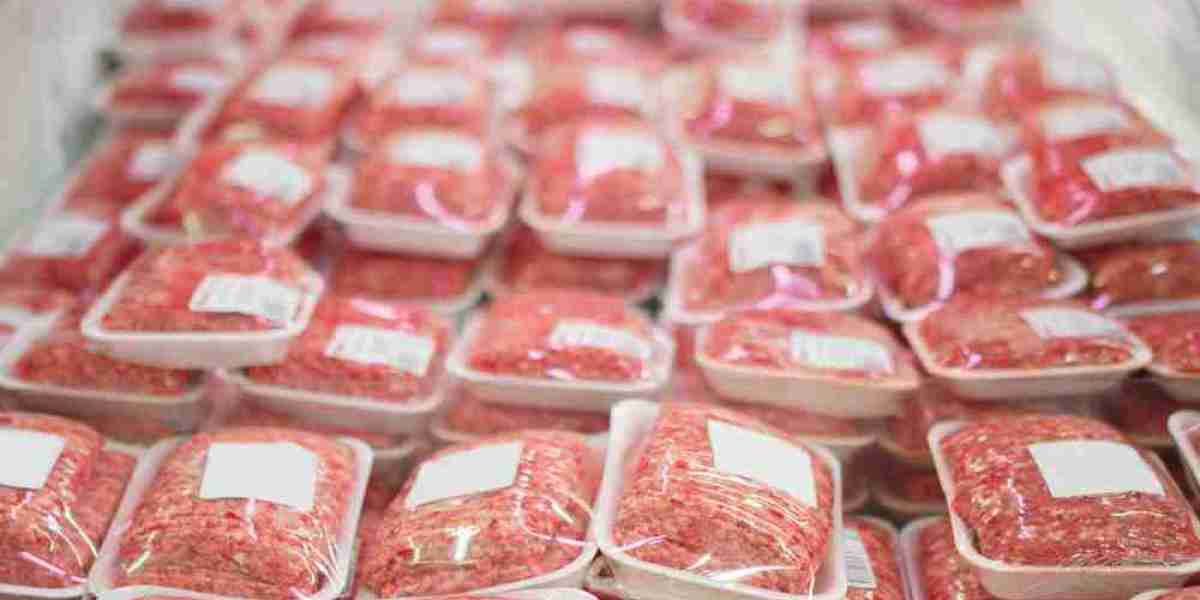The global meat packaging market plays an essential role in the food supply chain, providing solutions that preserve meat’s freshness, enhance shelf life, and ensure safety during transportation and storage. As consumer preferences evolve, meat consumption continues to rise, and technological innovations reshape the packaging industry, the potential of the meat packaging market is vast. This article explores the significant opportunities, key drivers, and future growth prospects for the market.
The Current Market Landscape
The global meat packaging market is valued at USD 35–38 billion in 2023, with projections indicating that it will reach approximately USD 45 billion by 2030, growing at a compound annual growth rate (CAGR) of 4-5%. This growth is propelled by the increasing global demand for meat products, advances in packaging technologies, rising concerns over sustainability, and the shift in consumer behavior toward more convenient, ready-to-eat food options.
The market is segmented into various packaging types, including flexible packaging, rigid packaging, and specialized forms like modified atmosphere packaging (MAP) and vacuum skin packaging (VSP). Flexible packaging, including films, pouches, and wraps, dominates due to its cost-effectiveness and versatility, while rigid packaging, such as trays and containers, is more common in premium meat segments. Specialized packaging technologies, such as MAP and VSP, are highly valued for their ability to preserve product quality over extended periods.
Rising Demand for Meat Products
One of the primary drivers of the meat packaging market's potential is the continuous increase in global meat consumption. As global populations expand and dietary preferences shift toward higher protein consumption, the demand for meat products, particularly in emerging markets like Asia-Pacific and Latin America, is expected to rise steadily. Urbanization and the expansion of the middle class in these regions have led to increased disposable income, making meat more affordable and accessible to larger segments of the population.
As consumers opt for more processed and convenience-oriented food products, there is an increasing need for efficient and effective packaging solutions that maintain product quality and enhance consumer convenience. This trend is likely to continue as the demand for ready-to-eat (RTE) and ready-to-cook (RTC) meat products grows, creating new opportunities for the meat packaging industry.
Technological Advancements and Innovation
The meat packaging market is evolving rapidly due to continuous advancements in packaging technologies. Modified Atmosphere Packaging (MAP) and Vacuum Skin Packaging (VSP), both of which are designed to extend the shelf life of meat products by controlling the atmosphere inside the package, are increasingly being adopted by meat producers. These technologies significantly reduce spoilage, help maintain visual appeal, and preserve the sensory qualities of meat products.
The growing interest in active packaging and intelligent packaging solutions is also expanding the potential of the market. Active packaging materials work to extend the shelf life of meat products by absorbing excess moisture, controlling gas emissions, or releasing preservatives. Intelligent packaging, which incorporates sensors to monitor factors like temperature and humidity, provides real-time updates on the product’s condition, ensuring that meat is stored and transported under optimal conditions.
The integration of these technologies opens up new avenues for innovation, particularly in the premium meat sector, where consumers are willing to pay more for packaging that enhances quality, safety, and convenience. As these innovations become more affordable and widespread, they will continue to drive the market forward.
Sustainability and Environmental Pressure
As concerns about the environmental impact of packaging continue to rise, sustainability has become a significant factor in the meat packaging market's potential. The growing global emphasis on reducing plastic waste, along with increasingly stringent regulations regarding single-use plastics, has led to a shift toward more eco-friendly packaging materials. The European Union's Single-Use Plastics Directive and similar legislation around the world are encouraging the use of recyclable, biodegradable, or compostable packaging.
In response, packaging manufacturers are developing alternative materials, such as biodegradable plastics, paper-based packaging, and plant-based polymers, which are gaining popularity in the market. The use of sustainable materials not only addresses consumer demand for environmentally responsible products but also allows companies to meet regulatory requirements and enhance their brand image.
This shift toward sustainable packaging presents substantial growth potential for businesses that can innovate and offer eco-friendly alternatives. Companies that invest in research and development of alternative materials and environmentally conscious packaging solutions stand to benefit from this growing trend.
E-Commerce and Direct-to-Consumer Trends
The rise of e-commerce and direct-to-consumer food delivery services is another factor contributing to the meat packaging market's potential. As more consumers purchase groceries online, packaging must adapt to the demands of long-distance transportation, which requires more durable, leak-proof, and temperature-regulated solutions.
Packaging that protects meat products during delivery while ensuring freshness upon arrival is essential for businesses looking to cater to the growing online grocery market. The demand for convenient, ready-to-eat meat products, coupled with the rise of e-commerce, will likely increase the need for packaging that can withstand transportation challenges and provide a positive consumer experience.
Regional Market Potential
Different regions are experiencing varying levels of growth in the meat packaging market. North America and Europe continue to be significant markets due to high per capita meat consumption and stringent food safety regulations. However, Asia-Pacific is expected to experience the highest growth rate in the coming years. With rapidly growing populations and increasing disposable incomes, countries in this region, such as China and India, represent a major opportunity for the meat packaging market.
As consumers in these regions adopt more Westernized diets and urbanize, the demand for packaged meat products will rise, driving further opportunities for growth. Additionally, the expansion of the middle class and the development of e-commerce platforms in these markets will further boost packaging demand.
Conclusion
The meat packaging market presents significant growth potential, driven by rising global meat consumption, advancements in packaging technologies, sustainability concerns, and changing consumer behaviors. As technological innovations, such as MAP, VSP, and intelligent packaging, continue to transform the sector, and the demand for eco-friendly packaging grows, the market is poised for a promising future.




